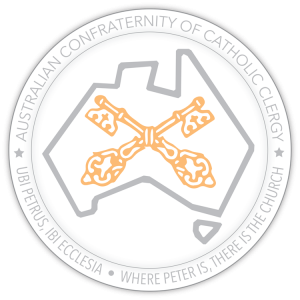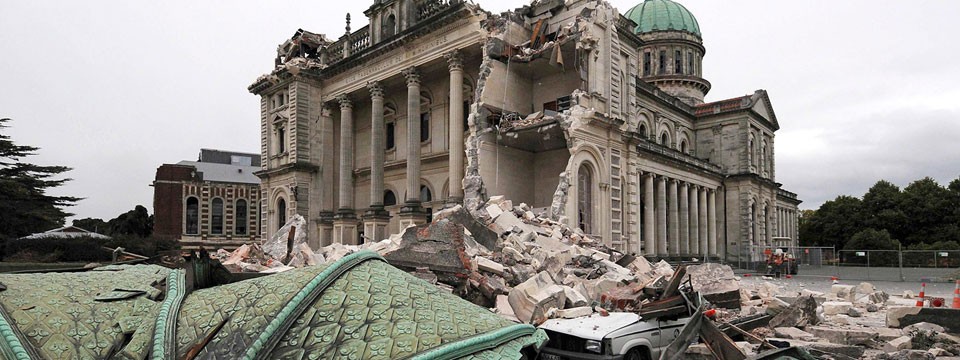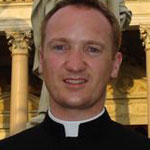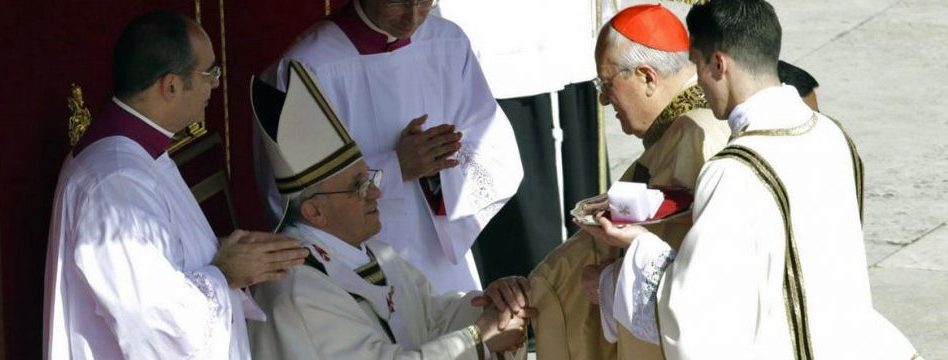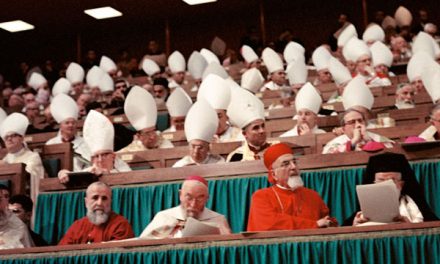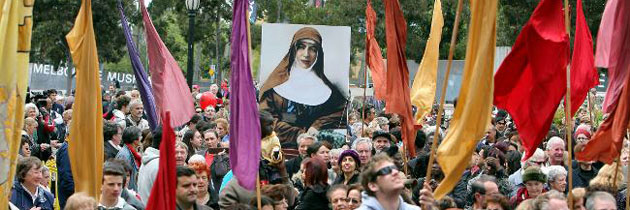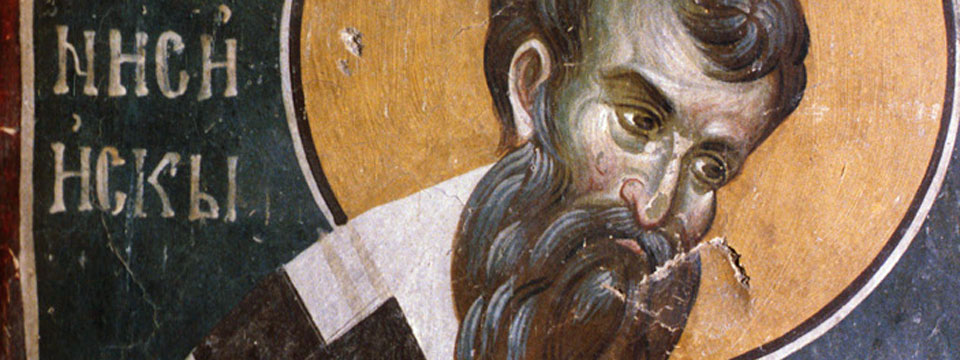Christchurch is known as the ‘Garden City’ on account of the wonderful public and private parks and gardens around the city. It is also known as the ‘Cathedral City’, primarily on account of the Anglican cathedral at the heart of the city, but no doubt also because of the very grand Catholic Cathedral of the Blessed Sacrament.
My own introduction to the Cathedral of the Blessed Sacrament was during the Papal visit of 1986 when, at primary school in Winton, we were all ushered into the library to watch the broadcast of Pope John Paul II leading an ecumenical ceremony in the cathedral. At that stage I didn’t know what the building was – I just knew it was like no other building I had seen in New Zealand. Over the years I came to know the building very well, especially during my time there as the Assistant Organist. The first time I entered the great basilica I was struck by the sheer volume of it and the wonderful arrangement of columns, domes, arches and chandeliers – a marvellously light and spacious whole that also provoked a sense of mystery.
The Cathedral of the Blessed Sacrament is considered the masterpiece of pioneer New Zealand architect Francis William Petre (1847-1918). The first Catholic Bishop of Christchurch, John Joseph Grimes SM (1842- 1915), had in mind a grandiose gothic cathedral for the new diocese, but Petre convinced Grimes to go for the basilica style because it was cheaper to build and it was also much more distinctively Roman – an important consideration in what was a Church of England settlement. Preaching at the opening of Oamaru’s impressive St Patrick’s Basilica on 18th November 1894, Grimes said: “I envy you this Basilica, which will be a monument of your faith. Preserve it and preserve your souls, which are the temples of the Lord, so that He may at the last day give you the reward which He has promised to all those who love and serve Him.”
Petre had already proved his credentials in major commissions in the Dunedin Diocese – including the gothic St Joseph’s Cathedral and neighbouring Dominican Priory, as well as the Oamaru basilica. Petre championed the basilica-style design, with examples in Wellington (Sacred Heart Cathedral), Dunedin (St Patrick’s Basilica), Invercargill (St Mary’s Basilica), Timaru (Sacred Heart Basilica) and his churches in Waimate and Oamaru dedicated to St Patrick. The fact that the ambitious design of St Joseph’s Cathedral in Dunedin was less than half realised no doubt contributed to Petre’s determination that any proposed cathedral for Christchurch would have to be feasible. It must have been a joy for him to see the completed cathedral opened by Archbishop Carr of Melbourne on 12th February 1905 – just four years after the foundation stone had been laid. The result is a testament to Petre’s design brilliance, the realisation of Grimes’ bold vision and a monument to the faith of the small and relatively poor Catholic community of the time.
For over a century the Cathedral has drawn admiration from locals and visitors alike – although it has always been the poor cousin in terms of its location, down near the gasworks. The playwright George Bernard Shaw visited Christchurch in 1934 and complimented the city on its beautiful cathedral. People presumed Shaw was referring to the cathedral in the Square. He clarified the matter by dismissing the Anglican cathedral as a mere copy and, lavishing praise on the Catholic cathedral, described its architect as the “New Zealand Brunelleschi” (designer of the dome of Florence Cathedral). Shaw lamented that Petre had probably spent his time in New Zealand designing houses when in a larger country he would have been designing major public buildings.
Over recent decades the Cathedral has developed a reputation as a centre of fine sacred music, boasting a musical programme that would be the envy of cathedrals anywhere in the world. A monthly rotation of orchestral, polyphonic, Gregorian and contemporary Masses as well as occasional sacred concerts help keep alive the musical tradition of the Church. The fine 1878 Halmshaw organ was first installed in the pro-Cathedral. It has three manuals and 27 speaking stops and is mostly in original condition. While not a large organ by cathedral standards, it has always impressed by it’s ability to fill the Cathedral with its strong reeds, full diapasons and brilliant mixtures – all aided by the superb acoustics.
The Cathedral Choir and Orchestra under Musical Director of over 40 years, Don Whelan, have toured widely, including Europe, the Holy Land and the Americas as well as various trips to Australia. They have rightly been described as one of Christchurch’s treasures – all the more so because of the link with such a wonderful building. Indeed, some of my own happiest musical memories involve the Cathedral – whether it was the thrill of Widor’s triumphant Mass for two choirs and organs, Gounod’s majestic St Cecilia Mass – performed in its entirety on the feast of Christ the King – or the concert performance of Elgar’s sublime setting of Cardinal Newman’s poem ‘The Dream of Gerontius.’
Images of the damaged Cathedral are heartbreaking. Visiting Christchurch in May this year I stood in front of the Cathedral in disbelief – so difficult to imagine that such a solid symbol of the Faith could now be in such a state of seeming ruin. Video footage from inside shows piles of rubble in the sanctuary from collapsed columns under the main dome, major cracks in stonework, and organ pipes bent and hanging over the gallery balustrade, looking more like melted cheese. There is some hope that the nave may be saved. The main exterior dome and the inner dome have already been removed and the rear of the building is being deconstructed.
Despite the collapse of the two front bell towers and the whole front of the south tower, the four large columns of the façade have remained standing. Above this, carved into the Oamaru limestone, is the phrase: Ecce Tabernaculum Dei Cum Hominibus (“Behold the Tabernacle of God with Men”). That these words have remained intact through so many earthquakes over the past year must give the Catholic people of Christchurch some hope amidst all the death and destruction.
The future of the Cathedral of the Blessed Sacrament remains unclear. Given its unique design in this part of the world, it is to be hoped that every effort will be made to rebuild it. As it sits like a giant ship-wreck at the end of Barbadoes Street, I can almost hear the echo of the Angel’s farewell from the ‘Dream of Gerontius’: “Farewell, but not forever!”
